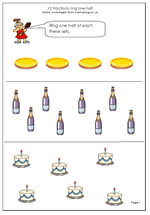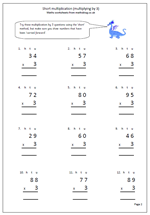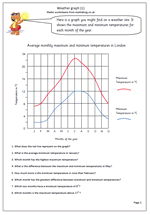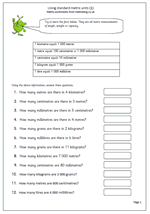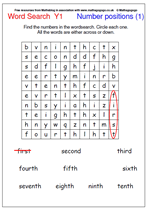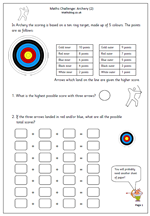
Archery is one of the oldest known sports; certainly it was a competitive activity in medieval times – remember Robin Hood! In the 14th century it was compulsory for all men aged between 7 and 60 to practise.
The idea of the sport is to shoot arrows at a target consisting of ten rings, with the Gold in the middle. Usually it takes the form of a knock-out competition with five sets. Each set consists of three arrows per archer.
This worksheet looks at the possible scores that can be achieved if all the three of the arrows land in the red and/or blue rings.
The Red Inner is worth 8 points.
The Red outer is worth 7 points.
The Blue Inner is worth 6 points.
The Blue Outer is worth 5 points.
This is a slightly harder task than the first Archery worksheet. When carrying out this look for children who work in a well organised, methodical way e.g. starting with the highest possible score (8, 8, 8) and working down. probably most suired to year 4/5 and can be found in our Year 5 Using and Applying Maths section.
Archery worksheet (2)
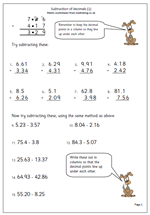 Here we have another page which looks at the written method of subtracting decimals. The key here is to lay the question out in the traditional method, with the smaller number below the larger number and with the decimal points in line.
Here we have another page which looks at the written method of subtracting decimals. The key here is to lay the question out in the traditional method, with the smaller number below the larger number and with the decimal points in line.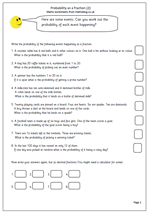
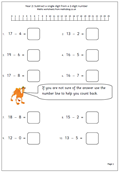
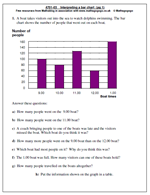
 The numbers go up in twenties, but of course there are intermediate values. The number of people on the 11.00 boat is more difficult to read and only a close approximation between 120 and 140 can be made. As it looks just less than half way to the next interval an estimate of just below 130 would be very accurate.
The numbers go up in twenties, but of course there are intermediate values. The number of people on the 11.00 boat is more difficult to read and only a close approximation between 120 and 140 can be made. As it looks just less than half way to the next interval an estimate of just below 130 would be very accurate.